Features of the plumbing in the country
How to organize round the clock water supply of the country house? Is it possible to mount a winter water supply in the country with their own hands? What pipes to use for water supply? Which pump should be preferred for its supply from the well? Let's try to answer these questions.
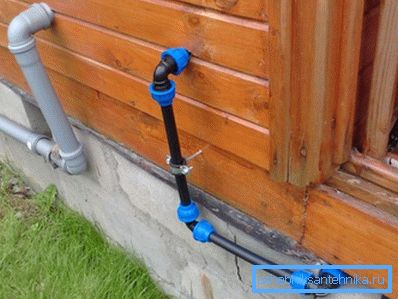
Schematic diagrams
Water sources
The scheme of water supply in the country with their own hands is determined primarily by the water source.
The most common options are:
- Well. Typical depth can be from 10 to 100 meters or more. Water from deepwater wells generally meets the highest quality standards; however, the high cost of drilling makes the extraction of water from deep aquifers unprofitable.
Reference: the price of drilling a running meter of a well bore varies from 2 to 5 thousand rubles, depending on the region of the country and the type of soil. For obvious reasons, rocky soil will cost considerably more than sandstone.
- Well. It collects groundwater from surface aquifers that have undergone soil filtration. The quality of water can be quite varied depending on the composition of the soil and the number of toilets and septic tanks in the vicinity; typical depth is 4-15 meters.
- Finally, in many garden partnerships, water is supplied through its own water supply network on schedule.. The frequency varies from two to four times a day to once a week.
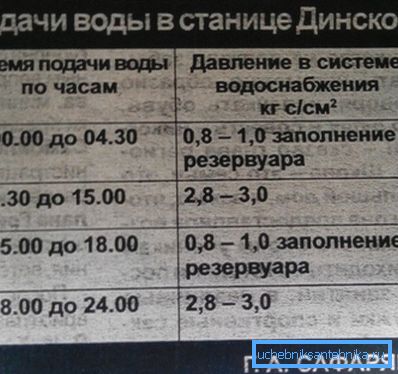
Well, well
If you have your own water source - a well or a well, a more practical scheme with a hydroaccumulator. It is a relatively small (16 - 100 liters) capacity, divided by an elastic membrane into air and water compartments.
What is this device for:
- It stabilizes the water pressure, preventing sudden surges and water hammer when the pump is turned on.
- It creates pressure when the flow is turned off from a well or well.
- It provides a certain amount of water, allowing the pump to stand idle most of the time.
In addition to the accumulator, the scheme should include:
- Pump.
- A check valve that prevents water from flowing back into the well or well.
- A pressure sensor with a relay that supplies power to the pump and removes it when the threshold values are reached.
- The sensor of the dry course of the pump, preventing the motor winding from overheating.
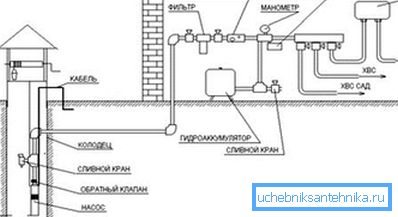
Hint: often a thermal switch that shuts off the motor when overheated is an integral part of its design.
When using water for drinking purposes, a filter with a carbon or osmotic filter and a boiler will not interfere either. Flow heaters are used in cottage conditions much less frequently — power constraints characteristic of garden associations are affected.
Scheduled water supply
When supplying water through our own partnership network, for organizing a permanent water supply, you need to create a fairly significant supply, which implies the presence of a storage tank.
In this case, pressure can also be created by a combination of a pump and a hydroaccumulator; however, a much simpler and cheaper way to provide it is to install a container on an elevation. In this role, a loft (with sufficient overlap strength), a welded frame, or any hillocks within the site can play a role.
Tip: for the normal functioning of the faucets and toilet cisterns, a pressure of at least three meters is necessary.
The device of the water supply system in the country with their own hands in this case implies that the removal of the common network comes to the tank and is completed with the usual filling valve from the toilet bowl. It is installed in the slot of the side wall of the tank at the neck level and does not allow the tank to overflow. Water intake is organized from the drain pipe at the bottom of the tank.

Go shopping
What do we have to buy and which solutions should be chosen?
Pipes
To begin with, let's compare all the popular offers, summarizing their key properties in a general table.
| Type of pipes | The cost of running meter for the diameter corresponding to DN20, rub | Flexibility | Connection method |
| Galvanized steel | 110 | Not | Threaded connections with manual threading |
| Corrugated Stainless Steel | 170 | Yes | Turnkey Compression Fittings |
| Metal plastic | 80 | Yes | Turnkey Compression Fittings |
| Polypropylene | 40 | Not | Molded solder fittings |
| Polyethylene | 15 | Yes | Manual Compression Fittings |
Polyethylene obviously looks like the best deal.
Does it have significant drawbacks?
- Heat resistance is limited to temperatures up to 65-80C. It makes no difference to us: wells, wells and garden water pipes do not serve boiling water.
- Working pressure is up to 16 kgf / cm2 against 20 and higher for competing solutions. It also does not matter: typically in an autonomous water supply system, the pressure does not rise above 2.5 kgf / cm2.
The instruction seems to be obvious: the installation of the water supply system in the country itself is best done with a polyethylene pipe.

Valves
Where the pipes, there and valve. Which ones are more fault tolerant and hassle-free?
Here you can also give a definite recommendation. It is better to opt for ball valves with yellow brass bodies.
Why on them?
- The absolute majority of the sold ball valves are classified as Class A according to GOST 9544-2005. This means that in the closed state they do not allow water to flow at all - unlike most competing solutions for which leaks are allowed.
- They do not require packing glands or replacement gaskets. Maintenance is reduced to tightening the stem seal after 500 - 2000 work cycles.
- These products have no typical problems. If we exclude frank fakes of unknown manufacturers, the ball valves practically do not break.
- Finally, the recommendation regarding the yellow case is associated with the presence of fakes on sale: chrome instead of brass sometimes hides silumin, which has a low strength and often crumbles already during installation.
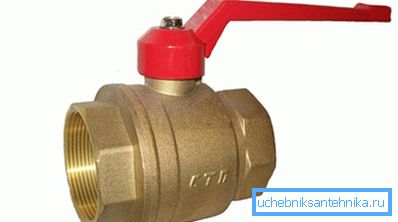
Capacity
The optimal choice for our purposes is an accumulative water tank made of food grade polyethylene.
There are several reasons for this:
- First, polyethylene retains its elasticity at low temperatures. Even if water freezes in the tank, in most cases it will not damage it.
- Secondly, the small weight of the tank allows you to install it yourself, without attracting loading equipment.
Reference: tank with a volume of 1000 liters weighs 60-65 kg.
- Thirdly, food polyethylene is not overgrown with algae and sediments that affect water quality.
The volume of capacity is selected depending on the schedule of water supply and daily consumption. The latter, in turn, can be roughly estimated at the rate of 200 liters per person per day. For example, with water supply twice a week and a permanent dwelling at the cottage of a family of two people, the minimum size of the tank will be 2 * 200 * 4 = 1600 liters.
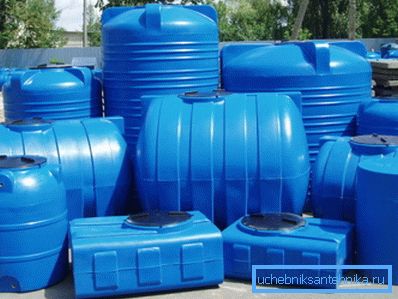
Pump
How to choose a pump?
For our purposes, only two types of widely-selling pumps are categorically inappropriate:
- Drainage fecal do not have a high pressure at the outlet. It rarely exceeds 7-10 meters, which, given the pressure losses in a long water supply system, will not be enough.
- Vibrating pumps require periodic replacement of membranes and contribute to the accelerated silting of the well or well.
The choice between the other members of the family is determined by the conditions of the work ahead.
Surface pumping stations are easy to maintain and, as a rule, are complete solutions with their own hydroaccumulator and pressure sensor.

They have two drawbacks:
- Much more noise than any submersible pump.
- The limited depth at which a pumping station can lift water. The maximum height of a water column at a pressure drop of one atmosphere is 10 meters; Since the impeller of the pump does not create an absolute vacuum in its cochlea, the real depth is somewhat less and amounts to 6-8 meters.
Single impeller vortex pumps are inexpensive, compact and provide high head. The only limitation associated with their work is high demands on clean water: the amount of suspended solids over 30 g / m3 will lead to accelerated wear of the impeller.
Multistage centrifugal pumps differ from vortex pumps by a large gap between the impeller and the casing, which allows them to lift water with a significant amount of suspensions. The inevitable drop in pressure is leveled by the presence of several successive stages: the output of one diffuser is connected to the input of the other, while all the impellers rotate on a common shaft.
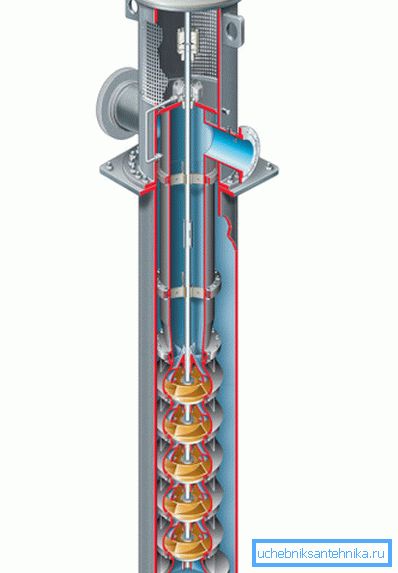
About mounting
At different stages of the installation of the plumbing, the reader will probably face a number of technical problems. Decisions of some of them we will try to prompt him.
If the winter operation of a summer cottage is planned, the construction of the water supply system at the country house with their own hands is carried out below the level of soil freezing. In those areas where this is not possible, the pipe is placed in a foam or polyurethane shell and supplied with a heating cable.
A well with a submersible pump is enough to cover and warm. The water in it, again, is usually below the freezing level and freezes.
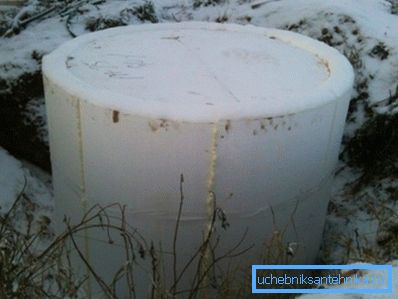
The surface pumping station and hydroaccumulator are installed in a heated room.
When supplying water to the tank in front of the inlet valve, it will not hurt to install a coarse filter. The condition of a typical suburban water supply network leaves much to be desired; water often carries rust and sand.
The submersible pump is installed at a distance of at least one meter from the bottom of the well or well. Otherwise, it will raise the sludge from the bottom.
The silty bottom of the well is supplied with a sand and gravel bottom filter. On clay soils under the gravel, a plank board of rotting larch is laid.

Conclusion
We hope that our recommendations will help the reader in choosing solutions for their own summer water supply. Additional materials can be found by viewing the video in this article. Successes!